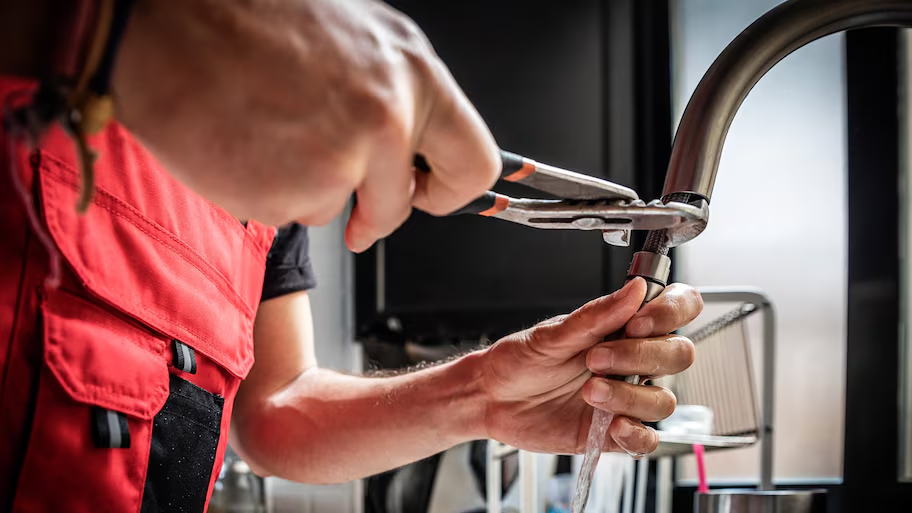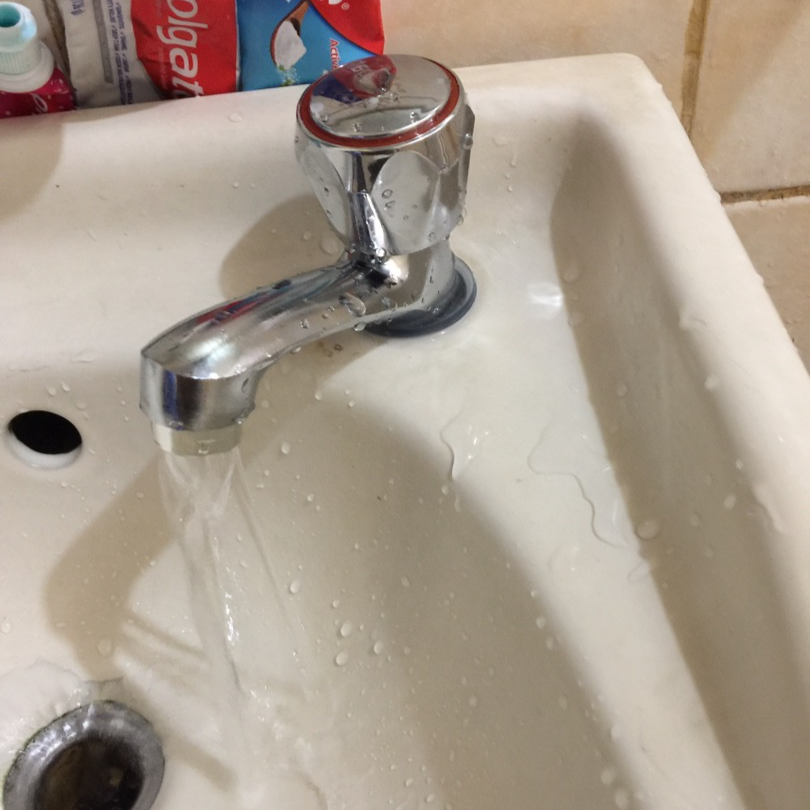Which It's Critical to Rectify a Malfunctioning Faucet
Which It's Critical to Rectify a Malfunctioning Faucet
Blog Article
This article further down pertaining to How to Fix a Dripping or Leaky Faucet is rather stimulating. You should investigate it.

Trickling taps might appear like a small inconvenience, however their effect surpasses simply the annoyance of the sound. From wasting water to sustaining unneeded economic costs and health risks, disregarding a leaking tap can bring about numerous consequences. In this article, we'll delve into why it's important to address this typical family problem immediately and successfully.
Wastefulness of Water
Ecological Influence
Leaking taps add substantially to water waste. According to the Epa (EPA), a single faucet dripping at one drip per secondly can throw away greater than 3,000 gallons of water annually. This not just stress water resources but also affects ecosystems and wild animals depending on them.
Financial Prices
Boosted Water Bills
Past the ecological effect, leaking faucets can blow up water costs significantly. The built up wastage over time converts right into higher energy costs, which could have been stayed clear of with prompt repair work.
Potential Residential Or Commercial Property Damage
In addition, extended dripping can lead to harm to fixtures and surface areas surrounding the tap. Water build-up can cause discoloration, rust, and even architectural problems if left unattended, leading to additional fixing expenses.
Wellness Worries
Mold and Mold Growth
The consistent existence of dampness from a leaking tap produces an ideal setting for mold and mold development. These fungi not just compromise interior air quality yet also present health threats, particularly for people with respiratory problems or allergic reactions.
Waterborne Diseases
Stagnant water in trickling faucets can end up being a breeding ground for germs and various other pathogens, boosting the risk of waterborne illness. Impurities such as Legionella bacteria flourish in stationary water, possibly resulting in severe illnesses when ingested or breathed in.
Do it yourself vs. Professional Repair service
Pros and Cons of DIY Repair Service
While some might try to deal with a dripping faucet themselves, do it yourself repairs come with their own collection of obstacles. Without correct knowledge and tools, do it yourself efforts can aggravate the concern or lead to incomplete repair services, lengthening the trouble.
Benefits of Hiring an Expert Plumber
Employing an expert plumber makes certain that the underlying source of the dripping faucet is attended to properly. Plumbers possess the competence and equipment to diagnose and fix tap issues effectively, saving time and lessening the risk of more damage.
Step-by-Step Overview to Taking Care Of a Dripping Tap
Devices Required
Before attempting to take care of a leaking faucet, gather the needed tools, including an adjustable wrench, screwdrivers, replacement parts (such as washing machines or cartridges), and plumber's tape.
Common Tap Issues and Their Solutions
Recognize the sort of tap and the certain problem triggering the drip. Typical problems include damaged washing machines, corroded valve seats, or faulty O-rings. Refer to supplier guidelines or on-line tutorials for detailed assistance on repair work.
Preventive Measures
Normal Upkeep Tips
To avoid dripping taps, do routine maintenance such as cleansing aerators, checking for leaks, and replacing damaged parts quickly. Additionally, take into consideration setting up water-saving devices or updating to much more efficient components.
Significance of Prompt Repairs
Resolving leaking faucets as quickly as they're observed avoids more water waste and potential damages, ultimately conserving both water and money in the long run.
Influence On Building Value
Assumption of Well-Maintained Building
Preserving a residential or commercial property in good condition, consisting of attending to maintenance problems like trickling faucets, boosts its perceived worth and desirability amongst potential purchasers or tenants.
Impact on Resale Worth
Qualities with well-maintained plumbing components, consisting of taps, command higher resale worths in the real estate market. Attending to dripping faucets can add to a positive perception throughout residential or commercial property examinations and negotiations.
Ecological Duty
Specific Contribution to Conservation
Taking obligation for dealing with dripping taps straightens with broader efforts towards water preservation and ecological sustainability. Every individual's actions jointly make a substantial impact on preserving valuable sources.
Lasting Living Practices
By prioritizing prompt repair services and taking on water-saving habits, individuals contribute to sustainable living methods that profit both existing and future generations.
Verdict
Addressing a dripping faucet exceeds plain ease; it's an important step toward saving water, minimizing economic prices, and guarding health and property. Whether through DIY repair work or expert support, acting to take care of leaking taps is a little yet impactful method to promote accountable stewardship of resources and contribute to a much healthier, extra lasting future.
How to Fix a Dripping or Leaky Faucet
A leaking faucet is one of the most common problems that homeowners encounter, but it being commonplace doesn’t make it any less annoying. The constant drip drip drip of a leaking bathtub faucet, showerhead, or sink tap can disturb your home’s serenity. Left neglected, a dripping faucet can also result in higher water bills and discoloration or mold growth in your sink or plumbing fixtures.
Fortunately, you don’t have to be a trained plumber to know how to stop a dripping faucet. With some basic tools, replacement parts, and a little patience, leaky faucet repair is a breeze. In this article, we’ll explain what causes dripping faucets and how you can fix them.
What Causes a Leaking Faucet?
Kitchen and bathroom faucets come in all manner of designs, but most involve some combination of valves, O-rings, seals, and washers. The O-ring is usually the weakest link, but any one of these pieces can wear down over time. Heat, moisture, temperature fluctuations, minerals, mold, and movement can contribute to warping and corrosion, breaking the watertight seal. This just comes with the territory of being a homeowner. Everything is always subject to wear and tear, and some component parts of your appliances and fixtures need to be replaced on occasion. At least replacement O-rings are cheap!
More rarely, dripping faucets can be a symptom of excessively high water pressure. Were this the case in your home, you would probably notice that the leak is not isolated to one faucet. Water pressure issues are harder to resolve on your own. We recommend contacting a professional plumber if you suspect your water pressure is too high.
How to Fix a Dripping Faucet
Pipe wrench or monkey wrench Allen wrench set Screwdrivers Old towel or rag Shut off the water.
Before you do anything, you need to turn off the water to keep from drenching your kitchen or bathroom. You should find a valve under the sink and against the wall. Once you’ve turned this valve, try turning the faucet on to confirm that the water source has been cut off.
If you can’t locate your local valve for the faucet you’re working on, you can always shut off the water to the house at the main valve. Of course, this will prohibit anyone from using the sinks, showers, or toilets while you’re working on the faucet that’s giving you trouble.
Plug or block the drain.
You’ll be disassembling the faucet and removing some small bits of hardware. Plug the drain with a stopper or rag to avoid the possibility of a small screw falling into your P-trap.
Take apart the faucet assembly.
There are several varieties of kitchen and bathroom faucets, each with its own manner of assembly. For detailed instructions on how to disassemble your faucet, you can refer to the fixture’s manual or contact the manufacturer. If you know whether you have a ball, disc, cartridge, or compression faucet, you can find detailed schematics online.
In general, you need to begin by removing the faucet handles. You might notice a small screw that you’ll need to remove with a screwdriver or Allen wrench. If you don’t see any visible securing hardware, it’s likely hidden under a decorative cap that can be unscrewed or popped off with flathead screwdriver.
Remove each piece methodically, consulting a schematic when necessary. Take notes or arrange the pieces in such a way to make it easier to correctly reassemble the faucet later.
Remove the cartridge.
Once you’ve removed the handles and securing hardware, you should be able to remove the valve cartridge or stem. Some cartridges will slide right out. Other faucet models will require you to loosen a nut with a pipe wrench before you can remove the valve stem.
Examine the exposed hardware.
With the cartridge or stem removed, inspect the component parts. Check the rubber O-rings for wear and tear. Also examine the seat washer for corrosion or other damage. These pieces are usually the responsible parties for a dripping faucet, but it’s worth inspecting the other component parts while you have the faucet disassembled.
Find replacement parts.
Once you’ve identified which faucet component has failed, find an identical replacement. Your local hardware store should have O-rings, seat washers, and other standard components in stock. If you have a luxury or uncommon faucet, you may have to contact the manufacturer for a replacement part.
It’s a good idea to take your old parts with you to the hardware store so you can compare them with the store’s inventory and be sure you’re purchasing the correct replacement.
Reassemble the faucet.
With your new parts in hand, reconstruct the faucet and handles. Don’t be tempted to overtighten screws or nuts. You might think this could create a better seal, but it can instead damage or bend a delicate part of the assembly and create a new problem for you.
Turn on the water and test the faucet.
The only thing left to do is test your work. Unplug the sink, turn the water back on, and try the faucet. Congratulate yourself on a job well done!
https://www.libertyhomeguard.com/how-to-fix-a-dripping-or-leaky-faucet/

Do you appreciate more info about What Causes Leaky Faucets & How To Fix Them? Try to leave a short review directly below. We will be happy to hear your views about this review. Hoping that you visit us again in the future. Please set aside a second to share this blog entry if you enjoyed it. Thanks a lot for being here. Kindly come by our blog back soon.
Report this page